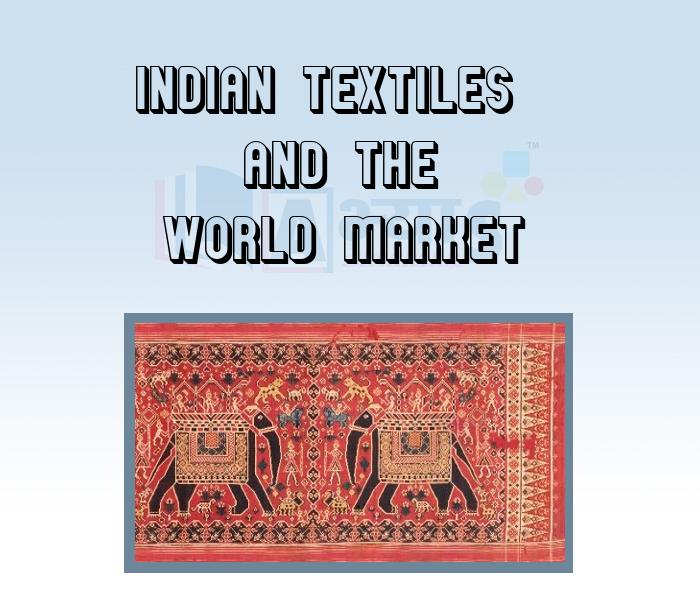Indian Textiles and the World Market









Indian Textiles and the World Market
India Textiles and the World Market : Around 1750 before the British conquered Bengal, India was by far the world’s largest producer of cotton textiles. Indian textiles had long been renewed both for their fine quality and exquisite craftsmanship. They were extensively traded in Southeast Asia (Java, Sumatra and Penang) and West and Central Asia. From the sixteenth century European trading companies began buying Indian textiles for sale in Europe.
 ( Patola weave, mid nineteenth century patola was woven in Surat, Ahemdabad, and Patna).
( Patola weave, mid nineteenth century patola was woven in Surat, Ahemdabad, and Patna).
European traders first encountered fine cotton cloth from India carried by Arab merchants in Mosul in present-day Iraq. So they began referring to all finely woven textiles as “muslin”- a word that acquired wide currency. When the Portuguese first came to India in search of spices they landed in Calicut on the Kerala coast in south – west India. The cotton textiles which they took back to Europe, along with the spices, came to be called “calico” ( derived from Calicut), and subsequently calico became the general name for all cotton textiles. There are many other words which point to the popularity of Indian textile in Western market. The order that year was 5,89,000 pieces of cloth. Browsing through the order book you would have seen a list of 98 varities of cotton and silk clothes. These were known by their common name in the European trade as piece goods- usually woven cloth pieces that were 20 yards long and 1 yard wide.
THE POPULARITY OF INDIAN COTTON CLOTHES IN ENGLAND AND EUROPE:
 jamdinweave in early 20th century
jamdinweave in early 20th century  printed design on fine cloth (chintz) produced in Masulipatnam, Andhrapradesh.
printed design on fine cloth (chintz) produced in Masulipatnam, Andhrapradesh.
Students / Parents Reviews [10]
Abhyas is a complete education Institute. Here extreme care is taken by teacher with the help of regular exam. Extra classes also conducted by the institute, if the student is weak.

Om Umang
10thMy experience with Abhyas academy is very good. I did not think that my every subject coming here will be so strong. The main thing is that the online tests had made me learn here more things.

Hiya Gupta
8thI have spent a wonderful time in Abhyas academy. It has made my reasoning more apt, English more stronger and Maths an interesting subject for me. It has given me a habbit of self studying

Yatharthi Sharma
10thMy experience was very good with Abhyas academy. I am studying here from 6th class and I am satisfied by its results in my life. I improved a lot here ahead of school syllabus.

Ayan Ghosh
8thAbhyas Methodology is very good. It is based on according to student and each child manages accordingly to its properly. Methodology has improved the abilities of students to shine them in future.

Manish Kumar
10thOne of the best institutes to develope a child interest in studies.Provides SST and English knowledge also unlike other institutes. Teachers are co operative and friendly online tests andPPT develope practical knowledge also.

Aman Kumar Shrivastava
10thAbout Abhyas metholodology the teachers are very nice and hardworking toward students.The Centre Head Mrs Anu Sethi is also a brilliant teacher.Abhyas has taught me how to overcome problems and has always taken my doubts and suppoeted me.

Shreya Shrivastava
8thIt was good as the experience because as we had come here we had been improved in a such envirnment created here.Extra is taught which is beneficial for future.

Eshan Arora
8thA marvelous experience with Abhyas. I am glad to share that my ward has achieved more than enough at the Ambala ABHYAS centre. Years have passed on and more and more he has gained. May the centre flourish and develop day by day by the grace of God.

Archit Segal
7thMy experience with Abhyas is very good. I have learnt many things here like vedic maths and reasoning also. Teachers here first take our doubts and then there are assignments to verify our weak points.
